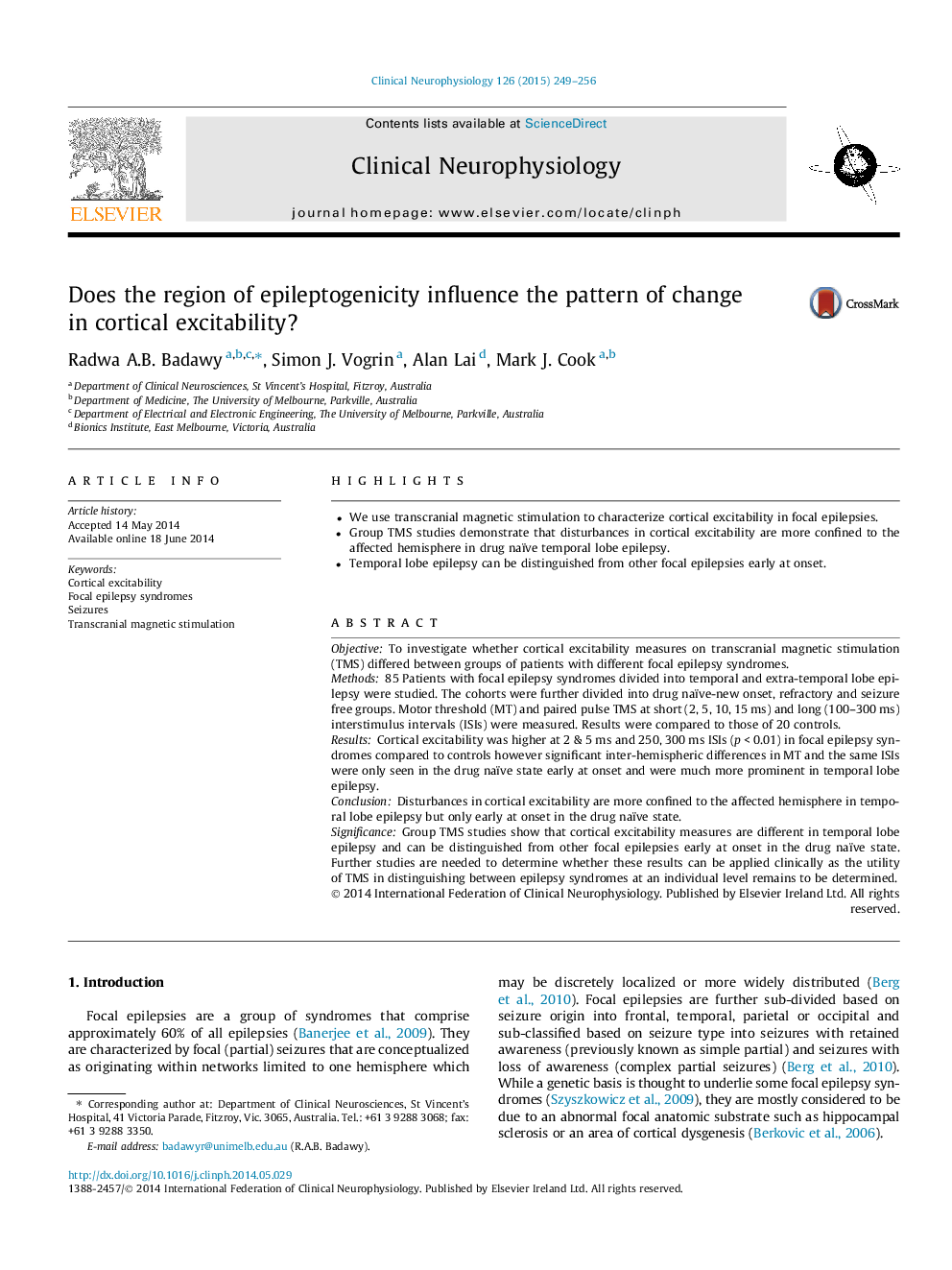| Article ID | Journal | Published Year | Pages | File Type |
|---|---|---|---|---|
| 3043067 | Clinical Neurophysiology | 2015 | 8 Pages |
•We use transcranial magnetic stimulation to characterize cortical excitability in focal epilepsies.•Group TMS studies demonstrate that disturbances in cortical excitability are more confined to the affected hemisphere in drug naïve temporal lobe epilepsy.•Temporal lobe epilepsy can be distinguished from other focal epilepsies early at onset.
ObjectiveTo investigate whether cortical excitability measures on transcranial magnetic stimulation (TMS) differed between groups of patients with different focal epilepsy syndromes.Methods85 Patients with focal epilepsy syndromes divided into temporal and extra-temporal lobe epilepsy were studied. The cohorts were further divided into drug naïve-new onset, refractory and seizure free groups. Motor threshold (MT) and paired pulse TMS at short (2, 5, 10, 15 ms) and long (100–300 ms) interstimulus intervals (ISIs) were measured. Results were compared to those of 20 controls.ResultsCortical excitability was higher at 2 & 5 ms and 250, 300 ms ISIs (p < 0.01) in focal epilepsy syndromes compared to controls however significant inter-hemispheric differences in MT and the same ISIs were only seen in the drug naïve state early at onset and were much more prominent in temporal lobe epilepsy.ConclusionDisturbances in cortical excitability are more confined to the affected hemisphere in temporal lobe epilepsy but only early at onset in the drug naïve state.SignificanceGroup TMS studies show that cortical excitability measures are different in temporal lobe epilepsy and can be distinguished from other focal epilepsies early at onset in the drug naïve state. Further studies are needed to determine whether these results can be applied clinically as the utility of TMS in distinguishing between epilepsy syndromes at an individual level remains to be determined.
